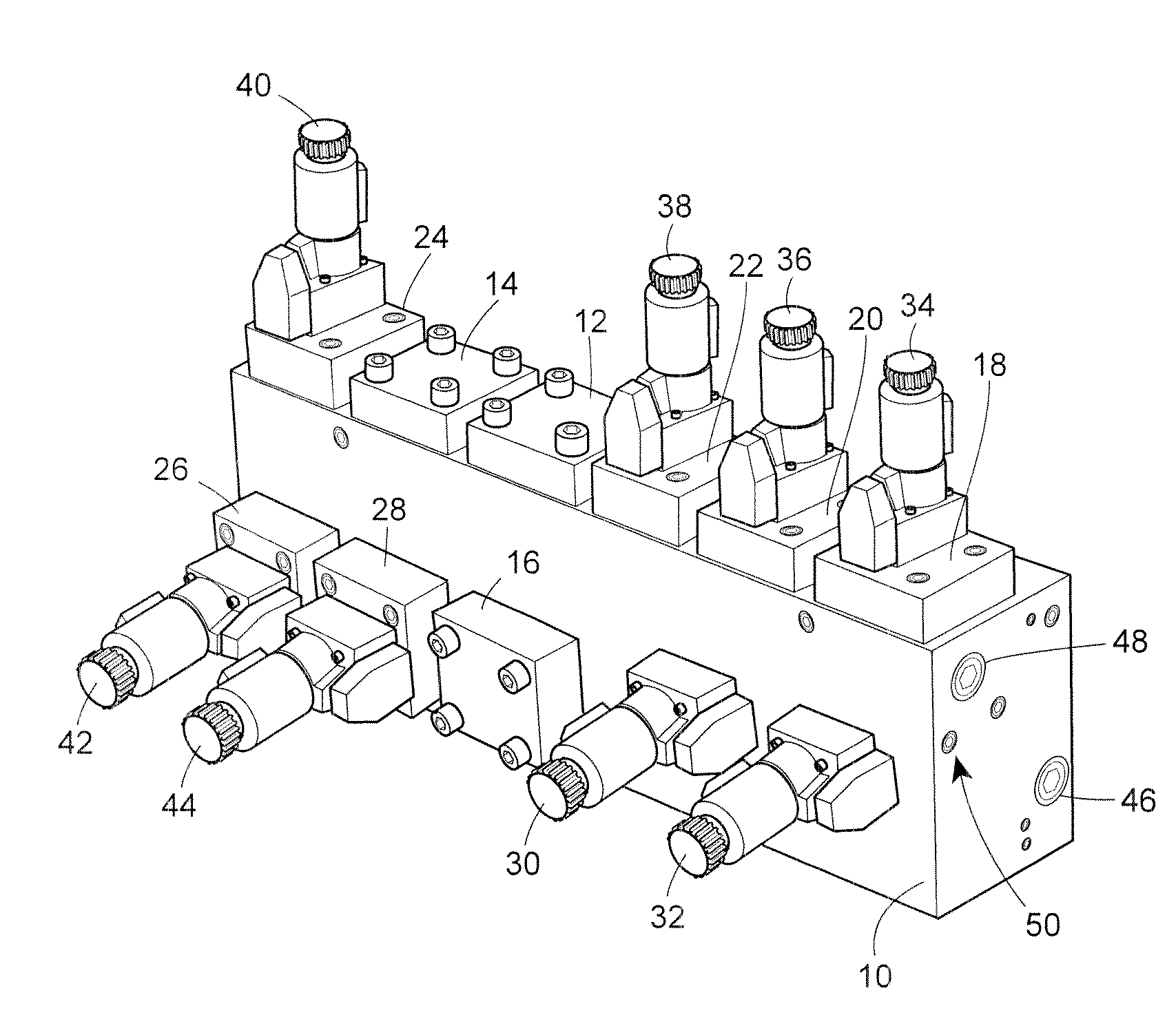Hydraulic Isolating Manifold
a technology of isolating manifolds and manifolds, which is applied in the direction of hose connections, couplings, fluid couplings, etc., can solve the problems of high-speed fluid penetration or cutting into objects or exposed skin, the valve itself is ejected from the manifold at a high speed, and the difficulty of servicing known hydraulically actuated control systems, etc., to achieve the effect of reducing or eliminating the possibility of a technician or other equipmen
- Summary
- Abstract
- Description
- Claims
- Application Information
AI Technical Summary
Benefits of technology
Problems solved by technology
Method used
Image
Examples
Embodiment Construction
[0030]Electrically actuated, hydraulic control valves are used in many instances to control the operation of various different types of devices, such as shut-down valves, turbines or other hydraulically controlled devices within a plant environment. Such control valves, for example, are commonly used in power generating plants, processing plants, manufacturing and automated plants. In such uses, the electrically actuated, hydraulic control valves are generally electrically connected to a controller, which causes the valves to actuate to control the flow of hydraulic fluid within one or more hydraulic lines, to thereby control the operation of a further device, such as a turbine, a valve or other device connected to the hydraulic fluid line within the plant. The electrically actuated, hydraulic control valves, which may be solenoid valves or other hydraulic manifold mounted valves, are generally mechanically and fluidly connected to a hydraulic control manifold, which is designed to ...
PUM
 Login to View More
Login to View More Abstract
Description
Claims
Application Information
 Login to View More
Login to View More - R&D
- Intellectual Property
- Life Sciences
- Materials
- Tech Scout
- Unparalleled Data Quality
- Higher Quality Content
- 60% Fewer Hallucinations
Browse by: Latest US Patents, China's latest patents, Technical Efficacy Thesaurus, Application Domain, Technology Topic, Popular Technical Reports.
© 2025 PatSnap. All rights reserved.Legal|Privacy policy|Modern Slavery Act Transparency Statement|Sitemap|About US| Contact US: help@patsnap.com



